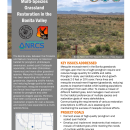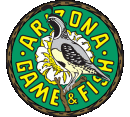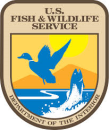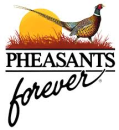Location
States
ArizonaIntroduction
The Bonita area of the Sulfur Springs Valley in southeastern Arizona, is important habitat for pronghorn (Antilocapra americana) and scaled quail (Callipepla squamata) - state-designated Species of Greatest Conservation Need in Arizona - mule deer (Odocoileus hemionus) and other grassland species. Historically, this area was semi-desert grassland habitat, with native grasses and forbs dominating the flatter desert portions of grassland while mesquite (Prosopis velutina) lined the banks of seasonal streams.
Encroachment of mesquite has reduced grassland habitat quality and quantity by changing the vegetation structure structure
Something temporarily or permanently constructed, built, or placed; and constructed of natural or manufactured parts including, but not limited to, a building, shed, cabin, porch, bridge, walkway, stair steps, sign, landing, platform, dock, rack, fence, telecommunication device, antennae, fish cleaning table, satellite dish/mount, or well head.
Learn more about structure from open grassland to a shrubland and reducing cover of forbs and grasses. Mesquite encroachment is driven by land use change, fire suppression, climate change climate change
Climate change includes both global warming driven by human-induced emissions of greenhouse gases and the resulting large-scale shifts in weather patterns. Though there have been previous periods of climatic change, since the mid-20th century humans have had an unprecedented impact on Earth's climate system and caused change on a global scale.
Learn more about climate change , a lack of keystone species, and more. Grubbing, or the mechanical removal of trees and/or shrubs using heavy machinery, is the primary treatment used for initial removal of mesquite in the Bonita area.
Furthermore, areas of quality grassland habitat have been fragmented by fence lines impervious to pronghorn and areas of dense mesquite that pronghorn tend to avoid. This isolates pronghorn populations from each other and prevents movement between areas of quality habitat.
In 2008, local ranchers began collaborating with the Arizona Game and Fish Department (AZGFD), Quail and Pheasants Forever, Natural Resources Conservation Service (NRCS), the local Natural Resources Conservation District (NRCD), and Arizona Antelope Foundation (AAF) to restore grasslands in the Bonita area. The restoration efforts area are landowner-driven; local ranchers seek actions that benefit cattle and wildlife. Between 2008 and 2018, the primary goal was to restore grasslands for the benefit of pronghorn, and cattle. Following this 10+ year period, the scope of grassland restoration projects expanded to include improving habitat for multiple species of wildlife and connecting grassland patches to each other. The goal as of 2023 is to create diverse and connected habitats across the landscape to benefit pronghorn, scaled quail, mule deer, and additional wildlife species, as well as improve rangeland productivity for cattle on private lands and state trust lands.
Key Issues Addressed
Pronghorn avoid areas where 2-3 foot shrubs exceed 10% cover because it infringes upon the open line of sight they require. Increased mesquite cover can reduce cover of grasses and forbs, important forage for pronghorn, cattle and other wildlife. High mesquite cover can also reduce important nesting habitat for scaled quail and other grassland birds that prefer bunch grasses and open ground for nesting.
Habitat fragmentation isolates pronghorn populations from each other and limits their access to food and water resources. Impacts include increased mortality during drought, and more vulnerable gene pools that threaten pronghorn resilience to disease and other risk factors.
Meeting the needs of multiple species requires effective communication between project partners and contractors operating restoration equipment. Project partners must indicate where habitat needs of differing wildlife species require different management actions to be taken. Equipment operators need to communicate the limitations of restoration equipment to ensure prescribed management is achievable.
Project partners needed information about occupancy and habitat needs of many species. Doing so with limited resources required effective use of planning tools and collaboration of all project partners to create a mosaic of different habitat types across the landscape that met multiple stakeholder goals.
It is challenging to accurately assess and maintain mesquite removal efforts. Grubbing projects often require follow-up treatments that include the use of herbicides. However, herbicides can have variable success rates. Inconsistent availability of pre-monitoring data, the differing habitat needs of multiple species, and the interests of stakeholders who have different restoration goals can make it difficult to clearly assess the success of past treatments and communicate these to land owners and land managers.
Project Goals
- Reduce fragmentation and improve quality of grassland habitat by connecting and expanding areas of high quality grassland habitat adjacent to the initial project area. Reduce mesquite cover in these areas to <10% and modify fences to allow for movement of wildlife.
- Develop and implement restoration treatments on a variety of ecological sites to create a mosaic of habitat types and levels of shrub cover across the landscape.
- Improve communication between project partners and grubbing contractors so that the desired size and density of mesquites are removed and environmental benefits are maintained while accommodating the limitations of grubbing machinery. For example, while wash bottoms may be easier and safer for the contractor to operate in than steeper areas, it is important to remove fewer mesquite in those areas in order to maintain erosion control while still benefiting scaled quail and preserving wildlife corridors.
- Maintain treated areas to ensure long-term connectivity, and improve forage availability for cattle by strengthening partnerships with various organizations including Quail Forever, AAF, NRCS, NRCD, Arizona State Land Department (ASLD), Pheasants Forever, and private ranches.
Project Highlights
Win-Win Restoration Project: The Bonita grasslands’ carrying capacity, wildlife habitats, and native species’ vitality improved post-restoration while ranches gain increased climate resilience and economic productivity.
- Building On Success: Early restoration work in the Bonita area to increase line of sight for pronghorn removed all mesquite on over 20,000 acres by 2018. Project partners benefitted from the success story of this restoration work that spread by word of mouth from rancher to rancher.
- Wildlife Corridors: Project Partners connected existing patches of restored grassland habitat to each other by “punching through” remaining areas of unconnected habitat. This restoration work resulted in modification of over 105 miles of fence that prevented pronghorn movement across the landscape into wildlife-friendly fences that pronghorn can safely cross.
- Woody Plant Removal: Between 2010 and 2018, partners typically removed 90%-99% of mesquite in order to increase habitat quality for pronghorn. Now that partners conduct most of the restoration work at higher elevation ecological sites outside of primary pronghorn habitat, restoration criteria have changed to benefit additional species that require higher mesquite cover. This results in a mosaic of different habitat types across the landscape that align with the historical ecological sites across the landscape.
- Spatial Communication Tools: Project partners used several user-friendly GIS-based phone applications to more accurately communicate project boundaries and prescribed densities of mesquite in different restoration areas. Contractors in turn were able to use these tools to indicate where they encountered limitations of the grubbing machinery in terms of slope and practicality of achieving target mesquite density of restoration prescriptions.
- Multi-Species Planning Tools: Project partners used a wide variety of publicly accessible planning tools including IPaC, ERT (Game and Fish Environmental Review Tool), and other user-friendly decision-support tools to learn which areas of the landscape different species were using. All of these tools were used in conjunction with the NRCS planning process, GIS ecological site maps, and wildlife habitat guides to develop landscape restoration prescriptions.
Lessons Learned
Restoration efforts were driven by local ranchers and landowners interested in improving the land they manage. It was therefore important for project partners to develop restoration prescriptions that would be beneficial to a diverse array of wildlife, while also maintaining the economic productivity of private ranching operations. When the landscape thrives due to restoration efforts, so do the businesses that rely on it.
Post-treatment monitoring revealed that grubbing effectively removes mesquite from the landscape and can meet desired post-treatment conditions. However, project partners noted mesquite resprouting 3 to 7 years post-treatment at rates of 100-200 plants per acre, indicating that follow-up maintenance is required to maintain low mesquite cover over time. Because in most cases the density of re-sprouting mesquite was too low for grubbing or aerial herbicide application, AAF, AZGFD, and NRCS partnered with ranchers to spot-treat new growth of mesquites using herbicides. AAF, AZGFD, and NRCS purchased herbicides and local ranchers provided the labor to apply it. Early results indicate spot-spraying killed over 75% of resprouts.
Hexazinone is a soil applied chemical that requires adequate rainfall to dissolve into the soil and taken up by the plant. Because of this, individual plant treatments using hexazinone have varied from control rates of 80% during years of average and above rainfall to as low as 50% during the drought of 2019-2020. Hexazinone is often applied at a rate of 4ml per 3 ft of height (refer to chemical label or a licensed CPA for appropriate application rates). Foliar herbicides such as the mix of Sendero + Tordon 22k applied to mesquite leaves are still being evaluated. Previous foliar treatments involving mixtures of aminopyralid, clopyralid and triclopyr that were applied at various rates and times of the year, have shown uneven results on velvet mesquite although they appear to be more effective on western honey mesquite. When planning herbicide treatments it is important include flexibility to delay treatments when weather conditions are not optimal.
Effective communication between project partners and community stakeholders were key to restoration success and continued expansion of restoration. Prior to the COVID-19 Pandemic, the NRCS coordinated an annual meeting to increase communication among project partners and stakeholders. The AAF, AZGFD, and Quail Forever provided clarity on anticipated benefits of the various restoration treatments for wildlife that would not compromise sustainability of ranching operations through direct contact with landowners and ranch partners.
Next Steps
- Expand partnerships among land managers, ranchers and landowners, state and federal partners, and NGOs to increase both participation and funding to assist landowners in completing restoration efforts
- Increase landowner interest in restoration participation by strengthening outreach efforts and increasing community knowledge-sharing
- Assess and communicate success of low-tech erosion control structures that use mesquite skeletons in actively eroding areas
Funding Partners
- Arizona Antelope Foundation
- National Fish and Wildlife Foundation grant in 2012 and a second one in 2016
- Arizona Sportsmen for Wildlife Conservation (License Plate Fund)
- AZGFD Landowner Relations and Habitat Enhancement Program
- Bureau of Land Management
- USFWS Partners for Fish and Wildlife
- National Resource Conservation Service
- Private landowner funds
Resources
- Arizona Antelope Foundation
- Arizona Antelope Foundation NFWF Grant Report
- Tools:
- Pheasants Forever
- Quail Forever
- Ungulate Migrations of the Western United States, Volume 3
- Pronghorn Management Guides. Fifth Edition
- National Wildlife Federation information about Pronghorn
- Guidelines for Management of Habitat for Mule Deer: Piñon-juniper, Chihuahuan desert, arid grasslands, and associated arid habitat types - New Mexico State University
- Habitat Improvement Guidelines for Pronghorn, Mule Deer, and Scaled Quail (AAF)
- Wildlife Management Institute’s 2010 Western Quail Management Plan
- NRCS Conservation Effects Assessment Project (CEAP) Grazing Lands Assessments
- Site Visit Notes from Restoration at O Bar O Ranch
- Monitoring Results from Velpar Treatment
Contacts
- Sarah Gandaria, U.S. Fish and Wildlife Service, Partners for Fish and Wildlife Program: sarah_gandaria@fws.gov
- John Millican, Arizona Antelope Foundation Field Project Manager: j2dbmill@msn.com
- Chase Skaarer, National Resource Conservation Service, Rangeland Management Specialist: chase.skaarer@usda.gov
CART Lead Author
Olivia Weeden, American University and NY Dept. of Agriculture
Suggested Citation
Weeden, O. (2023). “Multi-Species Restoration in the Bonita Area of Southeastern Arizona.” CART. Retrieved from https://www.fws.gov/project/multi-species-grassland-restoration-bonita-valley








